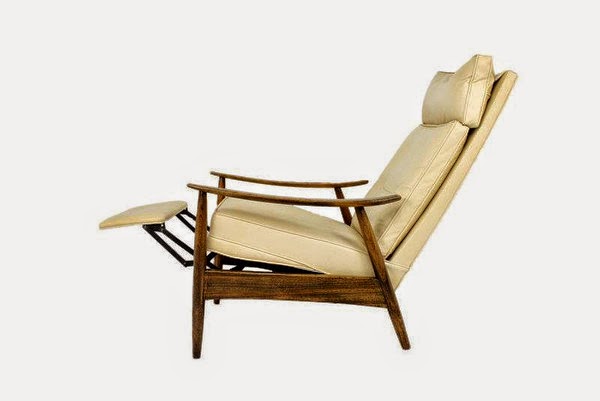(First posted 11/16/2010)
After studying architecture and product design at the Art Center School of Los Angeles and the California School of the Arts, Milo Baughman (1923-2003) took a job with the Frank Brothers department store as a salesman and a window dresser. On the side, he became involved with the influential publication Furniture Forum.
Glenn of California hired Baughman to design a new collection. Working mainly with walnut, Formica and wrought iron, Baughman created simple, understated pieces; many were conceived as space dividers, functioning admirably in the open plan interiors characteristic of the California Modern style.
In addition to Glenn of California, Baughman designed for a number of furniture companies starting in the mid-1940s until his death, including Mode Furniture, The Inco Company, Pacific Iron, Murray Furniture of Winchendon, Arch Gordon, Design Institute America, George Kovacs, Directional, Henredon and Drexel, among others. He is most famous, however, for his longtime association with Thayer Coggin of High Point, North Carolina.
After briefly running his own workshop, Baughman began a long association in 1953 with Thayer Coggin, a North Carolina furniture company that lasted until his death in 2003. His stylish furniture proved very popular with middle class consumers, and he quickly became a household name. Among his noteworthy designs for the company are the 820-400 chaise (1954) and the leather and chrome 951-103 arm chair (1962).
In 1969 he was invited by Brigham Young University to establish a Department of Environmental Design, where he continued as chairman and adjunct professor for several years, while continuing his design business. He moved to Virginia for twelve years and later returned to BYU as a senior lecturer. He also lectured over the years at the Rhode Island School of Design, the Univertity of Wisconsin-Madison and the University of Tennessee.
Baughman’s work was included in the Whitney Museums 1985 exhibit High Styles: Twentieth Century American Design. In recognition of his monumental impact on American taste, Baughman was inducted into the Furniture Designers Hall of Fame in 1987.
 |
| Desk for Glenn of California, 1949 1stdibs.com |
 |
| Scoop chairs for Glenn of California, 1952 mid2mod.com |
 |
| Credenza for Glenn of California, 1950s 1stdibs.com |
 |
| Scoop chair for Glenn of California, 1952 redmodernfurniture.com |
 |
| Drexel Perspective sideboard, 1952 1stdibs.com |
 |
| Sculpted chaise for Thayer Coggin, 1970 1stdibs.com |
 |
| Recliner for Thayer Coggin, 1960s mid2mod.com |
 |
| Sectional and tables for Thayer Coggin, 1960s antiquesmoderne.com |
 |
| Lazy susan coffee table for Thayer Coggin, 1960s Groovy Treasures (Antique Gallerry), Lewisville, TX |
Update (10/31/14): After hearing countless debates about the pronunciation of Baughman's name, I contacted Brigham Young University and Thayer Coggin some time ago for a definitive answer. The jury is in (and a well qualified one, at that). The correct pronunciation is MY-low BOFF-man.





.jpg)





































